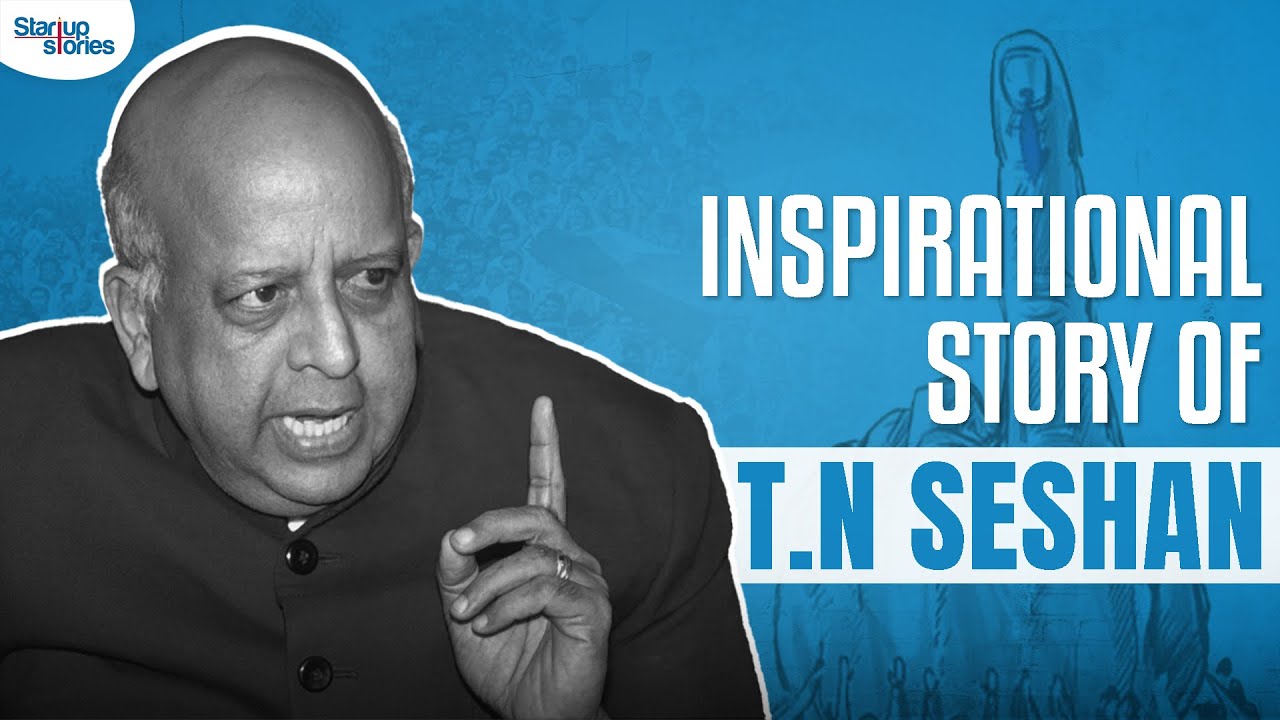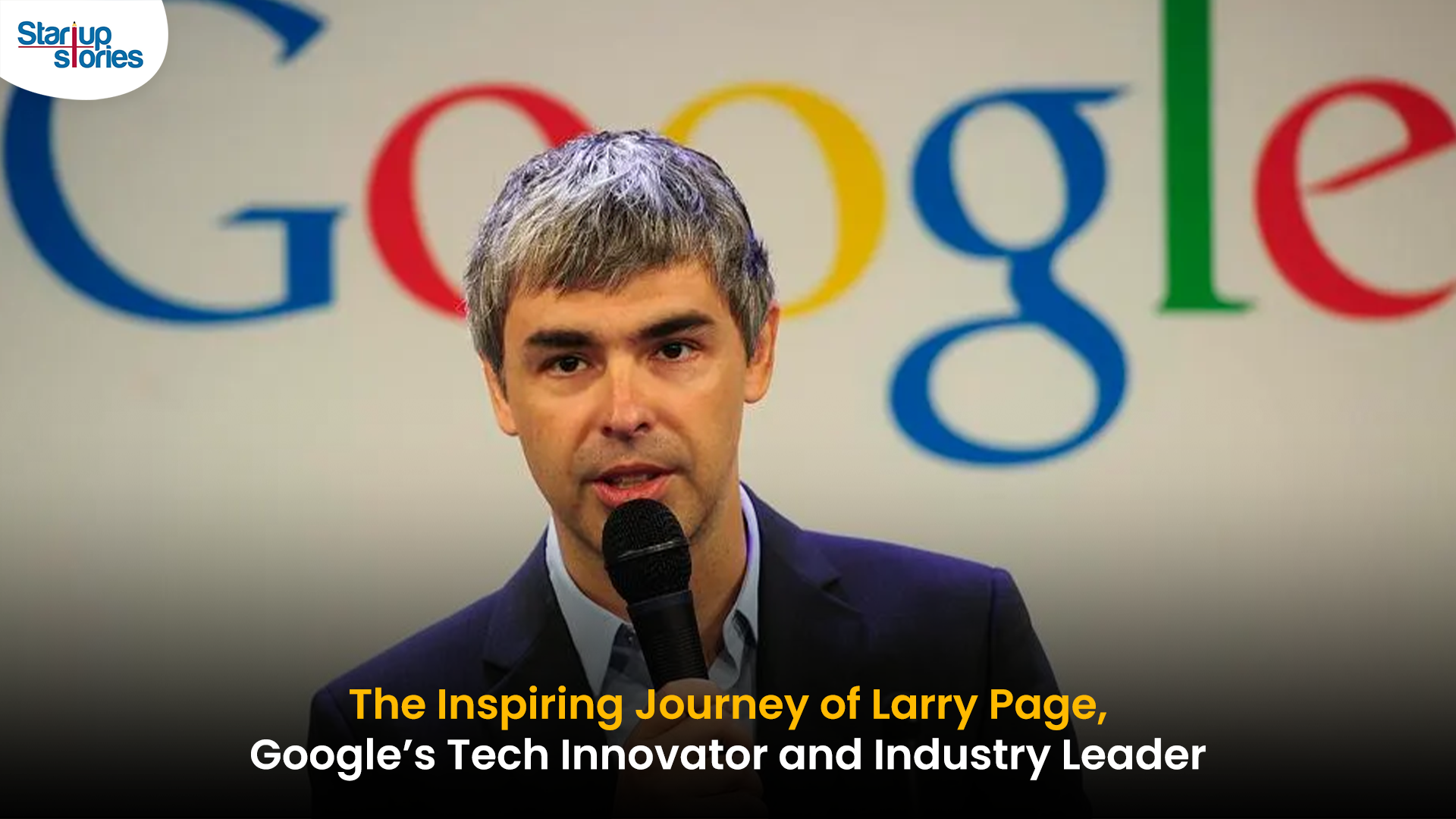Entrepreneur Stories
Xerox Secures $1 Billion IT Services Deal with TCS and HCLTech!

Xerox has announced a significant commitment of over $1 billion in IT services to Tata Consultancy Services (TCS) and HCLTech as part of a strategic partnership that will extend over the next 5 to 7 years. This announcement was made in a recent regulatory filing with the US Securities and Exchange Commission, detailing the financial scope and objectives of the agreements.
Breakdown of the Agreements
The partnership includes a $590 million contract with HCLTech for a five-year term and a $490 million deal with TCS over seven years. This collaboration is part of Xerox’s broader strategy to modernize its IT infrastructure and enhance operational efficiencies as it pivots towards digital services. Both TCS and HCLTech have previously indicated their commitment to expanding their partnerships with Xerox, which is headquartered in Connecticut.
In addition to these contracts, Xerox has also disclosed a $125 million commitment with Microsoft and a $50 million deal with SAP, each spanning seven years. The partnership with Microsoft focuses on leveraging Azure cloud services, while SAP will provide a cloud-based digital ERP platform aimed at streamlining operations.
Strategic Transformation Initiatives
The agreements come at a crucial time for Xerox as it embarks on a comprehensive transformation initiative. TCS is set to support Xerox in overhauling its IT infrastructure, migrating legacy systems to the cloud, and integrating generative artificial intelligence (AI) into its operations. Tino Lancellotti, Chief Information Officer at Xerox, emphasized that this digital transformation is vital for reinventing their operating model and enhancing client experiences.
HCLTech’s extended partnership also reflects its long standing relationship with Xerox, which has spanned over 15 years. The renewed collaboration aims to drive innovation and efficiency within Xerox’s operations.
Implications for Business Operations
These substantial investments are part of Xerox’s multi-year Reinvention initiative, which seeks to stabilize its core print business while expanding into digital and IT services. The company aims to reduce IT costs, standardize global processes, and simplify its application landscape by adopting advanced technologies.
The integration of SAP’s RISE platform is particularly noteworthy, as it will enable Xerox to streamline operations across various business functions, including finance, supply chain, and sales. This move aligns with Xerox’s goal of becoming a services-led organization that can adapt to evolving market demands.
Market Context
As the digital landscape continues to evolve, companies like Xerox are recognizing the necessity of transforming their business models to remain competitive. The total investment for these technology upgrades amounts to $525 million, with significant allocations directed towards TCS, SAP, and Microsoft. This strategic shift not only positions Xerox to enhance its operational capabilities but also reflects broader trends in the industry where traditional companies are increasingly adopting digital solutions to meet customer needs.
With these partnerships, Xerox is poised to leverage cutting-edge technology to drive sustainable growth while enhancing its service offerings in an increasingly competitive market. The finalization of these deals marks a pivotal moment for Xerox as it seeks to redefine its role within the technology landscape.
Videos
T.N. Seshan: The Fearless Reformer Who Redefined Indian Democracy

T.N. Seshan’s name stands tall in India’s history as the man who transformed the nation’s electoral system with extraordinary courage and integrity. Born in 1932 in Kerala, Seshan grew up with values of discipline, education, and service to the nation — virtues that shaped his illustrious journey. From his early brilliance at Madras Christian College to his advanced studies in public administration at Harvard University, Seshan’s path reflected rare determination and intellect. Joining the Indian Administrative Service in 1955, he built a reputation as a no‑nonsense officer committed to efficiency and honesty, serving in key roles such as Secretary of Defense and overseeing vital national programs.
As the Chief Election Commissioner of India in 1990, T.N. Seshan sparked a new era of electoral integrity. In a system once marred by corruption, violence, and malpractice, Seshan brought order, fear, and respect through his groundbreaking reforms. He introduced voter ID cards, imposed strict spending limits on campaigns, and insisted on transparency at every level of the election process. Despite criticism from political circles that labeled him dictatorial, his relentless pursuit of fairness empowered every citizen to vote fearlessly. Under his leadership, the Election Commission became a symbol of strength and integrity in Indian democracy.
Seshan’s passing in November 2019 marked the end of an era, but his message continues to resonate across generations. Leaders from every corner of the country mourned the loss of the man who restored faith in free and fair elections. His enduring legacy reminds us that true leadership lies not in wielding power, but in serving people with honesty, courage, and conviction. T.N. Seshan’s life remains a timeless inspiration a reminder that democracy thrives only when its citizens are vigilant, responsible, and fearless.
Entrepreneur Stories
Indian Man Quits JPMorgan, Takes 70% Pay Cut to Launch $6 Million Startup

Leaving behind a high-paying job at JPMorgan, an Indian entrepreneur embraced a 70% salary cut to pursue true purpose and passion in the startup world. Disenchanted with what he described as a “robotic” corporate routine, he sought meaningful work that made a real impact. This pivotal decision marked the beginning of his new journey, one focused on value creation rather than titles and corporate perks.
Powered by resilience and fresh perspective, the entrepreneur launched his own startup, prioritizing innovation and hands-on solutions. The road was challenging, but his vision resonated with the market: the startup quickly gained traction and raised $6 million—an impressive acknowledgement of its potential in a competitive landscape. Every hard lesson from early setbacks and bootstrapping paid off in real customer growth and investor confidence.
Today, his journey stands as an inspiring example for professionals seeking authentic success outside the corporate grind. By trading comfort for creative freedom, he grew a venture that solves important problems, generates jobs, and builds wealth beyond just salary. For ambitious founders, his story highlights the power of risk-taking, adaptability, and relentless focus on impact in India’s thriving startup ecosystem.
Videos
Larry Page: The Visionary Co-Founder Behind Google’s Global Success

Larry Page is a visionary technology entrepreneur and co-founder of Google, one of the world’s most influential companies. Born in 1973 in Michigan, Page grew up surrounded by computer technology, which inspired his passion for innovation from an early age. He studied computer engineering at the University of Michigan and later pursued his PhD at Stanford University, where he developed the revolutionary PageRank algorithm with Sergey Brin. This technology fundamentally changed the way search engines rank websites, making Google the most accurate and popular search engine globally.
The journey of Larry Page and Google began in 1998 when they officially launched the search engine from a small garage. Leveraging their unique algorithm, Google quickly surpassed competitors due to its ability to deliver highly relevant search results, transforming internet search forever. Under Larry Page’s leadership as CEO, Google expanded beyond search to launch groundbreaking products including YouTube, Gmail, and Google Maps, turning it into a global tech powerhouse that shapes how we access and interact with information online.
Larry Page later became the CEO of Google’s parent company, Alphabet Inc., driving innovation and investment in next-generation technologies such as artificial intelligence, autonomous vehicles, and healthcare solutions. His visionary leadership and commitment to technological advancement have cemented his legacy as one of the most influential figures in the tech industry. Today, Larry Page remains a key influencer in shaping the future of technology and digital innovation worldwide.














binance-ны ашуы шн тркелу
February 22, 2025 at 5:41 pm
Your point of view caught my eye and was very interesting. Thanks. I have a question for you.
Luanne Blackford
April 14, 2025 at 3:57 pm
My partner and I stumbled over here different web address and thought I may as well check things out. I like what I see so now i’m following you. Look forward to looking into your web page again.
binance帳戶
April 26, 2025 at 8:17 am
Can you be more specific about the content of your article? After reading it, I still have some doubts. Hope you can help me.
Fermin Wirta
June 30, 2025 at 11:53 pm
Hmm is anyone else experiencing problems with the images on this blog loading? I’m trying to determine if its a problem on my end or if it’s the blog. Any feedback would be greatly appreciated.
togel jitu
August 21, 2025 at 11:33 am
This really answered my downside, thank you!
situs toto 176
August 22, 2025 at 4:49 pm
I’m typically to running a blog and i really recognize your content. The article has really peaks my interest. I am going to bookmark your site and keep checking for new information.
canon mallorca
August 24, 2025 at 1:05 am
Thanks , I’ve just been searching for info approximately this topic for a long time and yours is the greatest I’ve discovered so far. However, what in regards to the conclusion? Are you positive about the source?
Kuwin
November 6, 2025 at 12:50 am
kuwin sở hữu kho game đa dạng từ slot đến trò chơi bài đổi thưởng, mang đến cho bạn những giây phút giải trí tuyệt vời.
站群程序
November 9, 2025 at 2:55 pm
搭载智能站群程序,自动化搭建与管理,为SEO项目提供核心驱动力。站群程序
J88
November 13, 2025 at 12:54 pm
Đến với J88, bạn sẽ được trải nghiệm dịch vụ cá cược chuyên nghiệp cùng hàng ngàn sự kiện khuyến mãi độc quyền.
谷歌站群
November 14, 2025 at 10:46 am
专业构建与管理谷歌站群网络,助力品牌实现全域流量的强势增长。谷歌站群
iwin
November 17, 2025 at 7:49 pm
iwin – nền tảng game bài đổi thưởng uy tín, nơi bạn có thể thử vận may và tận hưởng nhiều tựa game hấp
MM88
November 21, 2025 at 5:28 am
Với giao diện mượt mà và ưu đãi hấp dẫn, MM88 là lựa chọn lý tưởng cho các tín đồ giải trí trực tuyến.
GO88
November 23, 2025 at 3:02 pm
Tham gia cộng đồng game thủ tại Go88 để trải nghiệm các trò chơi bài, poker phổ biến nhất hiện nay.
MM88
November 25, 2025 at 8:45 am
Khám phá thế giới giải trí trực tuyến đỉnh cao tại MM88, nơi mang đến những trải nghiệm cá cược thể thao và casino sống động.
dmarket
November 26, 2025 at 4:31 am
What’s Happening i am new to this, I stumbled upon this I’ve found It positively helpful and it has helped me out loads. I am hoping to give a contribution & assist different users like its helped me. Great job.
gelatin trick for weight loss
December 1, 2025 at 9:44 pm
After study a few of the blog posts on your website now, and I truly like your way of blogging. I bookmarked it to my bookmark website list and will be checking back soon. Pls check out my web site as well and let me know what you think.
fdertolmrtokev
December 19, 2025 at 4:09 am
Wow that was strange. I just wrote an incredibly long comment but after I clicked submit my comment didn’t appear. Grrrr… well I’m not writing all that over again. Anyhow, just wanted to say fantastic blog!
fresh casino anmelden
December 20, 2025 at 3:00 pm
Es ist zu beachten, dass nur der eigentliche Gewinn ausgezahlt
wird, nicht jedoch der Betrag der Freiwette. Gewinne werden in Form von Echtgeld gutgeschrieben. Wichtig ist
in jedem Fall, dass dein Echtgeldguthaben 100%
dir gehört. Wenn du dein Echtgeld abhebst, musst du dir allerdings bewusst sein, dass dein Guthaben auf dem Bonuskonto durch diese Entscheidung verfällt.
Unser Flexi-Bonus System erlaubt dir, jederzeit Beträge von deinem Echtgeldkonto abzuheben. Alle anderen Boni –
Willst du einen anderen Bonus und damit entstandene Gewinne auszahlen, musst du einen Wert umsetzen, der dem 6-Fachen des
erhaltenen Bonusbetrags entspricht, solange nicht
anders angegeben.
Viele kennen Betway vom Sportwetten, andere nutzen die Seite für ihre Lieblingscasinospiele.
Diese Vorteile können von Freispielen und Freiwetten, bis hin zu anderen tollen Aktionen wie Einzahlungsboni und Boni ohne Einzahlung reichen. Betway ist ein Glücksspielportal, welches Casinospiele und Sportwetten anbietet.
“Im Bereich des Spieleangebots kann man sagen, dass das Betway mit einem guten Gesamtpaket einherkommt. Angefangen von klassischen Tischspielen bis hin zu einer Bibiliothek voller Slots und dem Live Casino wird hier einiges geboten. Und falls du hin und wieder auch gerne mal auf Sportwetten setzt und eSports spielst, bist du hier an der richtigen Adresse.”
References:
https://online-spielhallen.de/casino-of-gold-bonus-code-ihr-umfassender-leitfaden/
venlo casino anmelden
December 21, 2025 at 6:06 am
Insgesamt können Sie auf fast 350 Glücksspiele in 9 Kategorien zugreifen und online Spielautomaten, Roulette und Keno
spielen. Als Neukundin habe ich direkt einen attraktiven Willkommensbonus und einige Freispiele erhalten. Das Casino
ist lizenziert und bietet ein Umfeld, in dem
Spieler sicher und unbeschwert spielen können.
Weitere Informationen zu Slotspielen und deren Funktionsweise
finden Sie in unserem Online-Slotspiel-Ratgeber.
Es ist mit Sicherheit nicht unter den bekanntesten Titeln zu finden, aber es hat
doch die Aufmerksamkeit einiger Slotspieler auf sich gezogen. Der Spieler machte sich Sorgen um die
finanziellen Auswirkungen für sein krankes Familienmitglied und war bestürzt über die Forderung
des Casinos, er müsse weiterspielen und einzahlen, um höhere
Auszahlungen zu erhalten. Neben Slots und Tischspielen befinden sich
jedoch auch Sofortgewinnspiele im Portfolio des Casinobetreibers.
Die Software bietet acht Tischspiele, auf der
Webseite lassen sich dagegen 10 Casino Games finden. Spieler
können von einem Erster Einzahlungsbonus mit bis zu 30% Cashback und
einem Willkommensbonus mit 50 Freispielen profitieren.
Da Vinci’S Gold Casino und seine Schwesterseiten bieten eine spannende Auswahl
an Online-Glücksspielmöglichkeiten, die speziell für
den deutschen Markt interessant sind. Ein exzellenter Kundenservice in einem Online-Casino
wie Da Vinci’S Gold Casino bietet zahlreiche Vorteile.
Für Verifizierungszwecke steht die E-Mail-Adresse zur Verfügung.
Kunden können Unterstützung über Live-Chat in deutscher Sprache erhalten, was eine
schnelle und effektive Lösung von Problemen ermöglicht.
References:
https://online-spielhallen.de/avantgarde-casino-mobile-app-dein-mobiles-spielerlebnis/
jet casino bonus
December 21, 2025 at 8:39 pm
Jokerstar ist eine Top-Adresse in Sachen Online Glücksspiel.
Aufgrund der deutschen Lizenz und der Bestimmungen rund um den deutschen Glücksspielstaatsvertrag sind im Angebot nur Slots zugelassen. Unter den Zahlungsarten befinden sich bekannte Größen wie PayPal, Kreditkarten oder KLARNA.
Bekannt durch einige landbasierte Spielbanken, ist Löwen Play auch online mit
einem guten Angebot unterwegs.
Wenn die Webseite also das Logo der Malta Gaming Authority trägt, kann
ein Besucher sicher sein, dass es sich um eine zuverlässige Glücksspiel-Webseite handelt.
Die Glücksspiel-Regulierungsbehörde des Inselstaates stellt strenge Anforderungen an diejenigen, die
eine Lizenz erhalten wollen. Wenn der Betreiber sich darauf konzentriert, Dokumente
von dieser Organisation zu erhalten, ist es offensichtlich, dass sie
beabsichtigt, ehrlich, transparent und für eine große Zeitspanne zu arbeiten. Dies geschieht, obwohl nach der Gesetzgebung ein Spiel, das keine Bareinzahlung erfordert, nicht
als Glücksspiel bezeichnet werden kann.
Entdecke jetzt die Top-Slots und finde dein neues Lieblingsspiel!
Du kannst vom Willkommensbonus in den Online-Spielotheken profitieren.
Professionelle Supports stehen rund um die Uhr mit Rat und Tat zur Seite.
Zu einem guten Kundenservice gehört zudem, dass auf
den Webseiten nützliche Frage- und Antwortsektionen oder Hilfe-Center
zu finden sind.
References:
https://online-spielhallen.de/malina-casino-login-ihr-tor-zu-einer-welt-voller-unterhaltung/
online casino Sol
December 26, 2025 at 5:10 pm
This was already displaced by the ease of web or
slot mobile phone gaming. This is probably fine to play slots online and make sure that you get large amount of cash.
Grasping these effects is essential, whether one is a casual gambler, a concerned relative,
or someone dealing with gambling problems. Despite the substantial risks, it’s vital to recognize that for many, gambling remains an innocuous form of amusement.
The impact of gambling extends beyond the individual, affecting their social
surroundings. Referred to as problem gambling, this condition arises when the habit interferes with or harms one’s personal,
familial, or professional life. Nonetheless, this excitement can sometimes evolve into an addiction.
The appeal of gambling stems from its inherent uncertainty and the exhilaration of taking risks.
We may update our Privacy Policy from time to time.
We strongly advise you to review the Privacy
Policy of every site you visit.
References:
https://blackcoin.co/macau-casinos-guide/
Mindil Beach online casino
December 26, 2025 at 8:22 pm
I don’t understand because input the same amount of money
in other online casinos at a $2 wager and least come out even!
RocketPlay is all about elevating your gaming experience, and
we’re thrilled to be a part of your gaming journey.
Enjoy uncharted gaming territories and skyrocket your
wins! Your support is like rocket fuel for us!
The maximum amount of deposit depends on the payment method you
decide to use and will appear when choosing the payment method.
The Company is not responsible for the lost funds deposited from third party accounts.
Contact our support team at [email protected] to inquire about the payment methods which are most favorable
for your country of residence.
References:
https://blackcoin.co/welcome-to-fuckmate-australias-favourite-online-casino/
online casino real money
December 26, 2025 at 10:22 pm
I spun through games with high RTPs (96% or above) to maximise
winning chances.Jet4Bet Casino’s online pokies, powered by Betsoft, stood out for their stunning visuals and bonus features like free spins and multipliers.
If you play at top Australian casinos online, you can enjoy a casino game selection from leading software providers like NetEnt, RealTime Gaming, BetSoft, Boongoo, Evolution Gaming, Pragmatic
Play, Quickspin, and many others. Reload bonuses are given to existing members of
an online casino to show appreciation for loading funds into your account.
I play pokies, table games, specialty games, and live dealer options to ensure they’re
engaging and fair. I realised that finding the best online casino real money
is not about luck. Below is a brief review of the best online casinos in Australia that I tested, each with pros
and cons to help you choose.
Wagering requirements is the number of times the
sum of the bonus should be played for, to enable the player to withdraw the money they win using this
bonus. Other promotions include weekly and monthly bonuses, birthday gifts, free spins, tournaments, and
also loyalty points earned by regular playing. So, as you can see,
one is able to get a huge amount of real money for playing.
The full list of online casino reviews is in the
“Reviews” section of the main menu of our site.
If you would like to find the best all Australian online
casino, check our all Australian casino reviews.
Table games hold a special place in the hearts
of many Australian online casino players, offering a blend
of strategy and luck that keeps the excitement high.
Whether you’re looking to play casino games online for fun or aiming for big wins with real money
casino games, these casinos have you covered.
That’s why we offer quick-start guides to help you
navigate and rank the top real money online casinos for Aussies.
no deposit bonus australia
December 26, 2025 at 11:39 pm
Playing demo versions of games lets you try out new games and work on your strategies
without the risk. Most of the best gambling sites let you use
things like debit cards, e-wallets, and even cryptocurrencies
like Bitcoin. Decide how much money you can spend on your
gaming sessions and stick to that budget. Always read the terms and conditions before accepting any bonuses.
If crypto casino gambling sounds intriguing to you,
you now know exactly which category of top
Australian online casinos you should go for!
Much like playing online casino games, investing in cryptocurrencies
can be an exhilarating and volatile ride. Most of us would happily redeem a sturdy Australian casino
bonus and a few free spins on top every time that we visit Aussie online casinos.
Online casino bonuses can be an integral part of a person’s online gambling experience.
With the help of our huge number of different online casino categories, you can easily filter out the very best real money casino for you!
It is the case for every Australian online casino
player that all top online casinos are built differently.
But for players, a no deposit bonus Australia
is an offer worth cashing on given the perks it provides.
No deposit casinos are not easily found, at least from legitimate casinos, but they make all the difference in your gambling experience.
For more quick transaction casinos, visit our page of the
fastest payout online casinos in Australia. To learn more about promotions, visit our page of casino
bonuses for Australian players. With that, rest assured
that we dig for gambling sites that have superb bonuses — sometimes even no deposit perks!
star gold coast resort facilities
December 27, 2025 at 6:29 am
With a huge range of pokies, a rewarding welcome package, and modern payment methods such as PayID and crypto, it
competes strongly with other top-rated AU casinos.
The platform also promotes responsible gambling, offering deposit limits, time-out options, and self-exclusion features.
Richard Casino operates under a respected offshore license, providing Australians
with legal access to online gambling.
Our commitment to quality extends to our partnerships with the industry’s most respected
game developers. Enjoy the full Richard Casino experience
on any device, anytime, anywhere, without the need to
download a dedicated app. This daily release schedule keeps the excitement high and
provides a continuous stream of value long after your initial deposit, making your introduction to Richard Casino truly rewarding.
Before claiming a no deposit bonus, players should check the wagering requirements, eligible games, maximum cashout limits, and
any time restrictions. Yes, many online casinos give free spins to existing players with their reload and
match deposit bonuses \\u2013 for example, casinos such as Fair
Go Casino, HellSpin, and Woo Casino also offer plenty of free spins
perks for loyal players. The mobile optimization ensures that whether players are spinning slots, playing
live dealer games, or managing their account,
the experience remains fluid and enjoyable regardless of device choice.
Offering a wide range of games, bonuses, and excellent customer
service, Richard Casino is designed to provide a fun and secure gambling environment for players across Australia.Richard Casino stands out in the competitive world
of online gambling with its user-friendly platform, top-notch security, and amazing promotions.
References:
https://blackcoin.co/are-online-casino-vip-programs-worth-it/
https://jobteck.com.sg/
December 29, 2025 at 3:08 am
online casinos that accept paypal
References:
https://jobteck.com.sg/
https://morningstar24.com
December 29, 2025 at 3:49 am
us online casinos that accept paypal
References:
https://morningstar24.com
https://www.recruit-vet.co.uk/employer/paypal-gambling-sites-2025-best-operators-with-paypal-payments
December 29, 2025 at 10:20 am
paypal casino uk
References:
https://www.recruit-vet.co.uk/employer/paypal-gambling-sites-2025-best-operators-with-paypal-payments/
vieclam.kr
December 29, 2025 at 12:32 pm
online casino with paypal
References:
https://vieclam.kr/bbs/board.php?bo_table=free&wr_id=332
https://fakers.app/
December 30, 2025 at 3:59 am
online casino australia paypal
References:
https://fakers.app/bbs/board.php?bo_table=free&wr_id=49488
towerclimbers.work
December 30, 2025 at 4:16 am
online casino real money paypal
References:
https://towerclimbers.work/employer/best-payid-casinos-australia-in-2025-top-10-list/